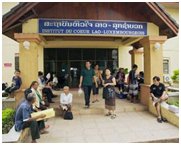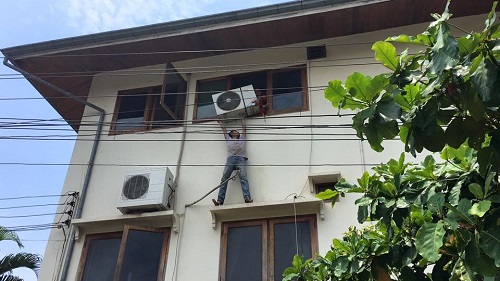What is a Heart Attack ?
A heart attack, or myocardial infarction (MI), is permanent damage to the heart muscle. “Myo” means muscle, “cardial” refers to the heart, and “infarction” means death of tissue due to lack of blood supply.
A closer look inside your Coronary Arteries
Your heart muscle needs to receive a good supply of blood at all times to function properly. Your heart muscle gets the blood it needs to do its job from the Coronary Arteries.
What is Coronary Artery disease?
Coronary Artery disease is the narrowing or blockage of the coronary arteries caused by atherosclerosis. Atherosclerosis (sometimes called “hardening” or “clogging” of the arteries) is the build-up of cholesterol and fatty deposits (called plaque) on the inner walls of the arteries that restrict blood flow to the heart.
Without adequate blood, the heart becomes starved of oxygen and the vital nutrients it needs to work properly. This can cause chest pain called Angina. When one or more of the coronary arteries are completely blocked, a heart attack (injury to the heart muscle) may occur.
What happens during a heart attack?
A network of blood vessels known as coronary arteries surround the heart muscle and supply it with blood that is rich in oxygen. The heart muscle needs this oxygen to function. A heart attack occurs when a coronary artery becomes suddenly blocked, stopping the flow of blood to the heart muscle and damaging it. All or part of the heart muscle becomes cut off from its oxygen supply. Left without oxygen, the heart muscle is injured.
Symptoms of a Heart Attack
The Importance of Early Defibrillation
Every Minute Counts.
 Every Minute Counts
Every Minute Counts
It is a proven concept that the only effective treatment for ventricular fibrillation (VF) is prompt defibrillation. Yet, defibrillation is only effective when it is administered within the first few minutes of a Sudden Cardiac Arrest (SCA) episode.
Chance of Survival
A study published in an October 2000 issue of the New England Journal of Medicine suggests that survival rates are highest when defibrillation is delivered within three minutes of the time of collapse.
This study is further backed up by a study of incidents at the MCG (Melbourne Cricket Ground, Victoria) and Shrine of Remembrance that showed that:
“Out of 28 victims of sudden cardiac arrest 86% left the venue alive”, having been treated at the scene with a defibrillator. Compare this to the average survival rate in Australia of around 3%.
Defibrillators are at the heart of any defibrillation program, and only through greater defibrillator availability will response times improve. Defibrillators have the potential to assume a role similar to that of the fire extinguisher – omnipresent and ready in case of emergency.
Although the deployment of defibrillators is becoming more widespread, they are not prevalent in Laos as yet. This will change as people see the benefits.
Look around where you live, where you work, and the places you frequent and determine how close you are to a defibrillator and a trained responder. Guidelines recommend three minutes to access a defibrillator. If a Sudden Cardiac Arrest victim can’t be reached within this timeframe, It may be time to become a champion for early defibrillation, not only for your safety, but for others as well.
WHO CAN YOU SAVE WITH CPR?
The life you save with CPR is mostly likely to be a loved one.
- Four out of five cardiac arrests happen at home.
- Statistically speaking, if called on to administer CPR in an emergency, the life you save is likely to be someone at home: a child, a spouse, a parent or a friend.
- African-Americans are almost twice as likely to experience cardiac arrest at home, work or in another public location than Caucasians, and their survival rates are twice as poor as for Caucasians.
How to SAVE A LIFE
You can prepare yourself to act in an emergency by simply viewing
- Continuous CPR instructional video. https://www.youtube.com/watch?v=VzSq-88Ibak
- How to use an AED: https://www.youtube.com/watch?v=msRft-g-k_s
Services in Vientiane
The Lao Luxenbourg Heart Intitute offers the best in- hospital services in Vientiane. The Lao-Luxembourg Heart Institute is a benchmark hospital for Laos. It is integrated in the local health plan and in the policy of the Laotian government which consists of furthering high-level specialized medicine at Mahosot University Hospital, which will lead to an improvement in the overall quality of medicine in the country in the near future.
 The Institute has a cardiology and cardiac surgery department with the following units:
The Institute has a cardiology and cardiac surgery department with the following units:
- 1 hospitalization unit with 29 beds;
- 1 cardio logical intensive care unit with 5 beds;
- 1 postoperative intensive care unit with 7 beds;
- 2 echocardiographic laboratories;
- 1 stress test laboratory;
- 1 emergency admission unit with 4 resuscitation beds;
- 2 operating theatres;
- 1 conference room;
- 3 rooms for consultations with patients
Look around where you live, where you work, and the places you frequent and determine how close you are to a defibrillator and a trained responder. Guidelines recommend three minutes to access a defibrillator. If a Sudden Cardiac Arrest victim can’t be reached within this timeframe, It may be time to become a champion for early defibrillation, not only for your safety, but for others as well.
If you should run into an emergency best is call Vientiane Rescue (call 1623).
 This article has been provided by FAS First Aid Services, known for its experience in first aid and trauma training courses carefully tailored to the needs of each customer in Laos
This article has been provided by FAS First Aid Services, known for its experience in first aid and trauma training courses carefully tailored to the needs of each customer in Laos








